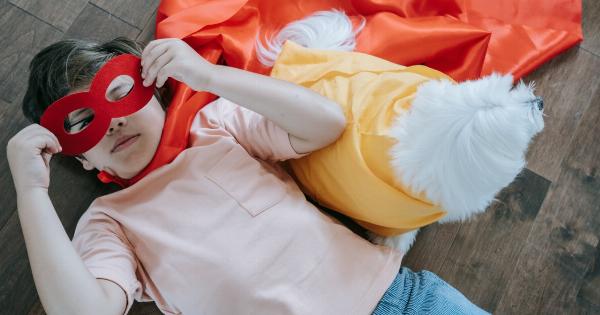For some people, the act of dressing up as a dog can be a playful and lighthearted form of kink or roleplay. However, there are many dark and troubling aspects to this activity that often go unacknowledged.
From issues of animal abuse to the psychological effects on participants, there is much to explore when it comes to the dark side of dressing up as a dog.
Defining Pet Play
Dressing up as a dog is a form of pet play, which involves one person taking on the role of a pet and another acting as their human owner or trainer.
Pet play can encompass a wide range of activities, from simple roleplaying to more elaborate scenarios that involve obedience training, physical restraints, and even cages or kennels.
Many people who engage in pet play do so as a form of consensual and mutually enjoyable BDSM or kink activity. However, there are also those who use pet play as a way to justify abusive or non-consensual behaviour towards their partners.
This can include using pet names or language without consent, failing to respect the boundaries of the pet role, or using physical force or punishment to enforce the roleplay.
The Problem with Animal Abuse
One of the biggest concerns when it comes to dressing up as a dog is the potential for animal abuse. This can take many forms, from physically harming a partner during pet play to using live animals as a prop in a sexual scenario.
It is important to note that using real animals in pet play is never acceptable. Animals cannot give consent, and involving them in sexual or kink activities is both cruel and potentially illegal.
Moreover, it sends a clear message that treating living beings as sexual objects is acceptable or even desirable.
Even when no animals are involved, however, there is still an underlying issue of animal exploitation at play when people engage in pet play.
This is because pet play often involves humans taking on the roles and behaviours of animals, without necessarily considering the impact this has on real animals.
Psychological Impacts on Humans
While pet play can be a consensual and enjoyable activity for some people, there can also be significant psychological impacts on those who engage in it.
This can include creating a sense of dependency or subservience to the human partner, blurring the lines between pet roleplay and actual human behaviour, and even promoting harmful attitudes towards animals.
For some individuals, pet play may be a way of coping with past traumas or feelings of powerlessness. However, it is important to note that engaging in kink or BDSM activities should never be a substitute for professional therapy or support.
Furthermore, there are numerous instances of people becoming trapped in pet roleplay or feeling unable to disengage from the activity. This can lead to feelings of shame, isolation, and even depression or anxiety.
Final Thoughts
While dressing up as a dog can appear to be a harmless or fun activity on the surface, there are many underlying issues that make it a problematic form of kink or roleplay.
From concerns around animal abuse to the psychological impacts on participants, it is important to examine all aspects of pet play and engage in these activities with care and consent.
If you are considering engaging in pet play, it is important to think carefully about how this might impact both you and your partner.
Be sure to establish clear boundaries and communicate openly about what you are comfortable with and what you are not.
Remember, while exploring kink and BDSM can be a deeply rewarding and empowering experience, it should always be done with safety, consent, and respect in mind.






























